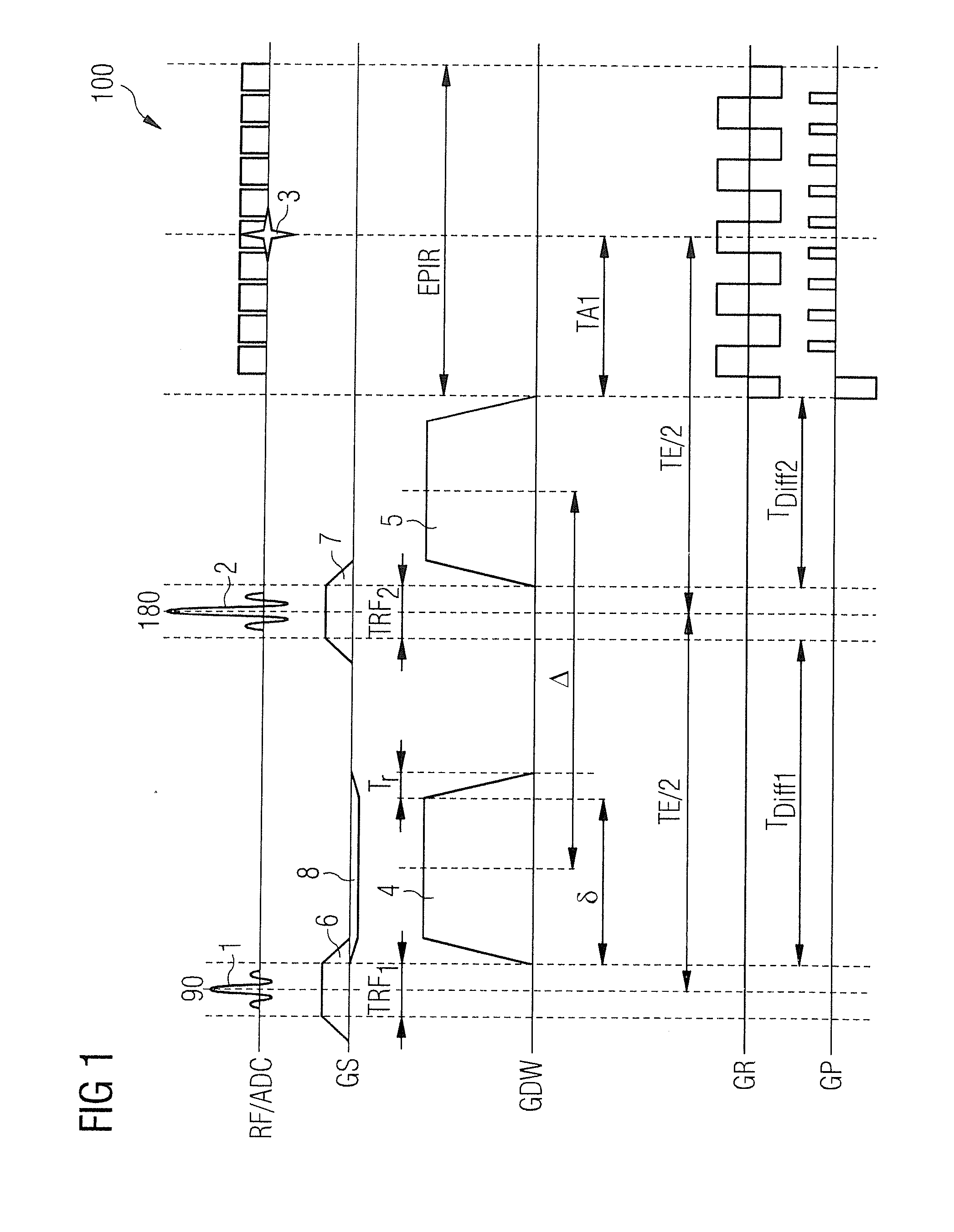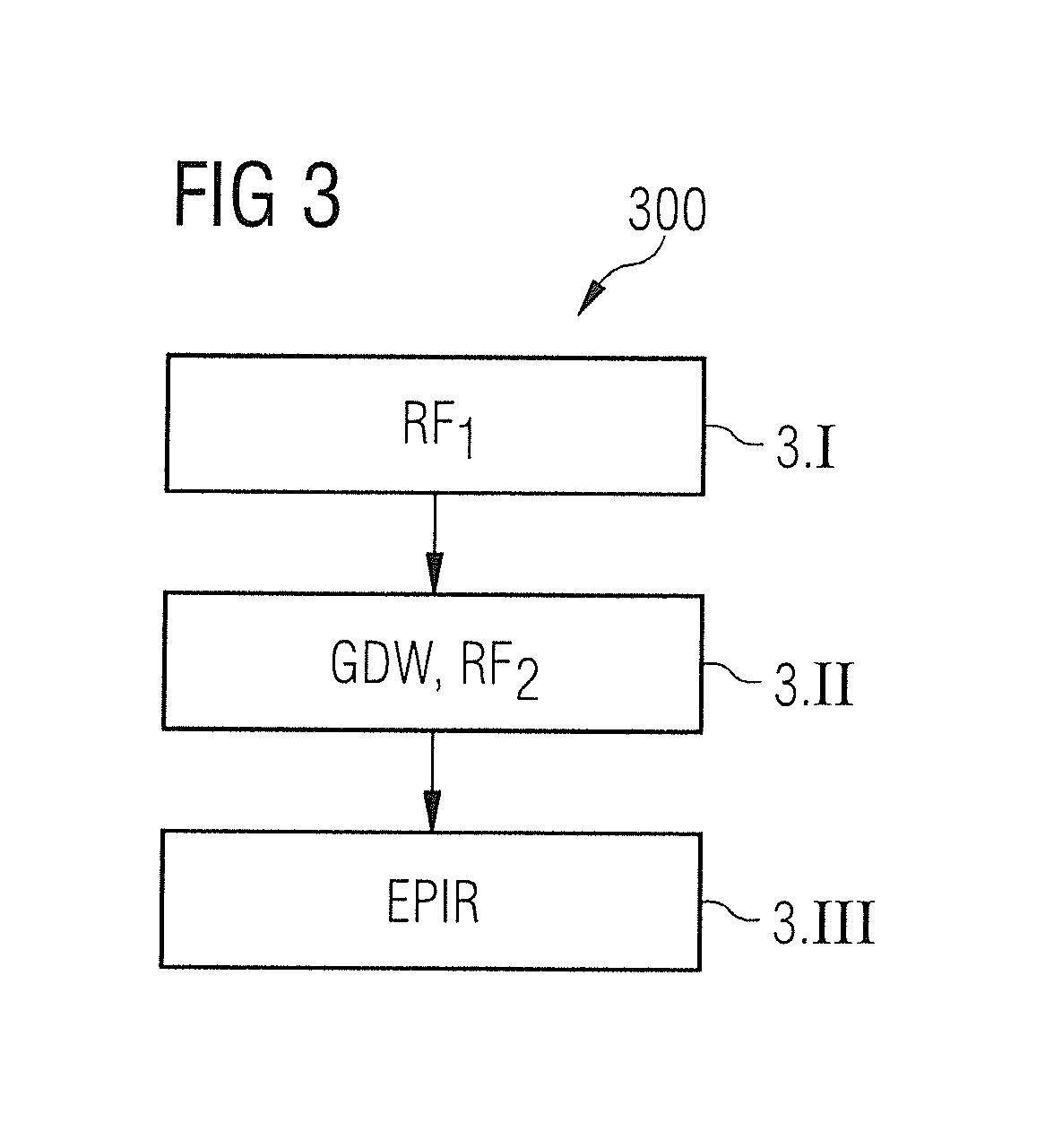Method and magnetic resonance apparatus for speed-compensated diffusion-based diffusion imaging
a magnetic resonance apparatus and diffusion imaging technology, applied in the direction of magnetic measurements, measuring devices, instruments, etc., can solve the problems of signal loss, error in the evaluation of diffusion maps, overestimation of apparent diffusion coefficient (adc), etc., and achieve the effect of shorter time and higher diffusion sensitivity
- Summary
- Abstract
- Description
- Claims
- Application Information
AI Technical Summary
Benefits of technology
Problems solved by technology
Method used
Image
Examples
Embodiment Construction
[0062]FIG. 1 shows a Stejskal-Tanner sequence. This is by far the most important diffusion-weighted pulse sequence in the prior art. The first line of the graph, which is identified with RD / ADC, shows an RF excitation pulse 1, which is switched as the start of a pulse sequence simultaneously with a slice selection gradient 6 (see second line GS) and an RF refocusing pulse 2, which is switched between two diffusion contrast gradient pulses 4, 5 (see third line GDW) and with which a slice selection gradient 7 is also switched simultaneously (see second line GS). The gradient pulses 4, 5 have the same polarity and as a rule the same amplitude and duration. The RF refocusing pulse 2 forms a spin echo 3 (see first line), which, in the example shown, is read out with an EPI echo readout train EPIR comprising a plurality of readout windows. Furthermore, in the graph in FIG. 1, the second line from the bottom shows a gradient sequence GR in the readout direction (frequency encoding directio...
PUM
 Login to View More
Login to View More Abstract
Description
Claims
Application Information
 Login to View More
Login to View More - R&D
- Intellectual Property
- Life Sciences
- Materials
- Tech Scout
- Unparalleled Data Quality
- Higher Quality Content
- 60% Fewer Hallucinations
Browse by: Latest US Patents, China's latest patents, Technical Efficacy Thesaurus, Application Domain, Technology Topic, Popular Technical Reports.
© 2025 PatSnap. All rights reserved.Legal|Privacy policy|Modern Slavery Act Transparency Statement|Sitemap|About US| Contact US: help@patsnap.com



